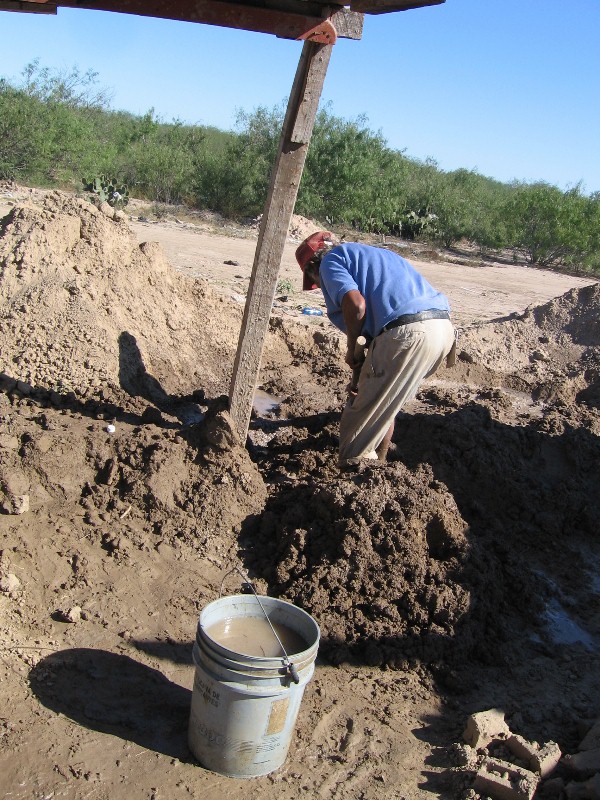Big panorama of the brick production area
Here the gentleman has accumulated a pile of dirt, hauled from the banks of the Rio Grande. The river is about 100 yards beyond that brush line, and he has dug, wheelbarrowed and sifted the dirt to this location. He is now mixing a batch with water drawn from the hand-dug well in the center, hauled up in a five gallon bucket with a rebar constructed wellhead. A batch is about a half of a cubic yard of material, shaped into an onion shape for production.

This gentleman is pulling a plug of mud from the onion and throwing it into the mold.

He will press it:

Then scrape the excess, which is generally a very small amount:

The next step is to stand up and carry the mold to the scraped and dusted production floor:

After dumping the brick, the mold is dusted with fines, and the process begins again.

When enough brick are made to fill a kiln or half kiln, they are moved into the scrap brick, wood fired, tunnel chamber kilns. They burn wood for 8 days, then plaster the firedoors and let it cool for 8 more. The brick are then hand sorted and stacked on pallets directly from the kiln.



The culls not used in the kilns are used to pave the yard. Not bad for overloaded 18 wheeler traffic:

This brickyard is next door, but is not operational or for sale.
